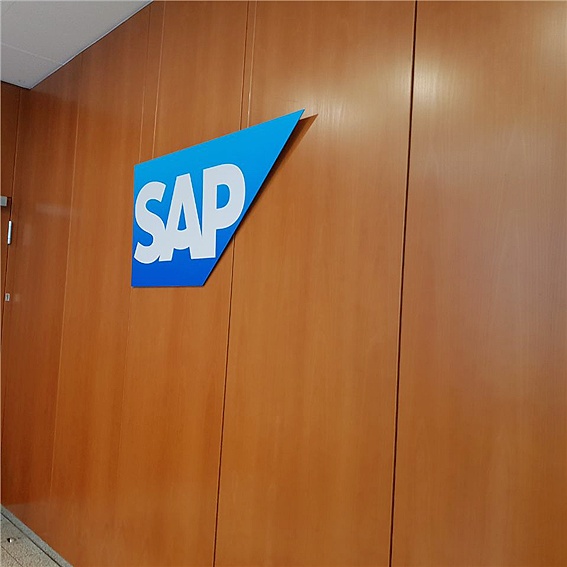SAP?
 |
| Logo of SAP |
9:30 AM
on the way to SAP
After we enterd the building we were able to heard about what is SAP. Divided into two group we looked around SAP.
Firstly we experienced Augmented Reality using iPad. Through this experience we could know the history, logo of SAP and so on.
Secondly we became a future consumer by wearing 3D glasses. The video's content was about that consumers not only can set the color of shoes or size but also can design their shoes as they want in the future.
They gave us a chance to experience future consumer's life but it seems like quite hard to click the virtual button. In my opinion, therefore to be commercialized this kind of things should be supplemented.
There were many products in the next space.
- Non facial mirror
Non facial Mirror avoids faces: To see yourself in the mirror. you have to cover or obscure your own face to prevent it from being detected through facial recognition.
The artist duo Shinseungback Kimyoughun is trying to tell us that as humans. we should think beyond our own humanity to set ourselves apart from artificial intelligence. And they pose the question: What is more true-that which we see or that which the machine sees for us?
- Bittercoin
Bittercoin is an old calculator machine that Martin Nadal and Cesar Escudero Andaluz have hacked to validate pending Bitcoin transactions. They combine the internet of Things, media archeology, and business to create what is probably the world's slowest Bitcoin miner. In addition to computing capacity and efficiency, which are normally key to Bitcoing transactions, this exhibit also poses the ironic question of who has knowledge and access to it. As such, the underlying operations are displayed on the screen of the calculator machine and then printed on paper rolls.
- Learning to see: Hello, World!
Learning to see: Hello. World! is a neural network that opens its eyes for the first time at the touch of a button and tries to understand what it it seeing on a live camera feed. Memo Akten simulates the physical process of seeing and examines the processes of learning and understanding. Its algorithm can be compared metaphorically to the brain of a newborn child - but with the exception that we bear the evolution of humanity, and thus certain innate behaviors within us. which means our sight is influenced by emotional encodings and switches. Can a self-learning machine ever simulate that?









댓글 없음:
댓글 쓰기